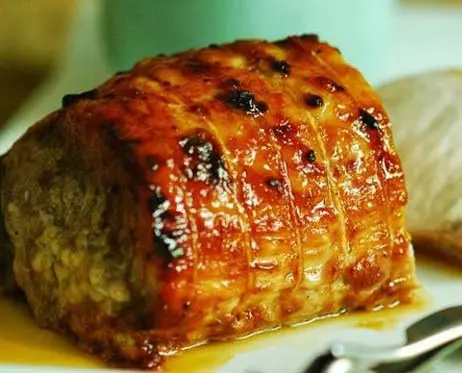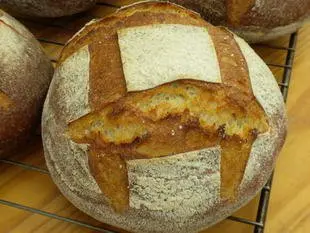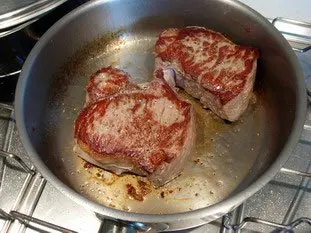Maillard reactions

With a name like that, they could well be some principle in mechanics, but in fact the term applies to something much closer to all of us: it's what gives food more flavour cooked than when raw!

You might think that there is nothing revolutionary in that, and that you already knew it: cooked meat has more flavour than raw meat! Of course that's true, but it took the good Monsieur Maillard to describe and explain the phenomenon.
In fact Maillard reactions crop up everywhere in cooking, and affect much of what we eat and drink.

- When the crust on a baked loaf is crisp and brown - that's them!
- When beer is brown (or amber-coloured) - there they are again!
- When coffee is dark after roasting and reveals its flavour
- When chocolate develops its delicious aromas after “cooking" the cocoa butter
- When the roast in the oven is covered with a fine and very tasty crust
- When the skin on fried chicken turns crispy
- When a dish just gets better and lightly browned on reheating
- You use your toaster
etc., etc.
If they are present, it's an excellent thing. It means that it's good, it's tasty, it has that great “properly cooked” flavour that I've already mentioned, and this is particularly true of cooking meat.
The consequence of all this is that we should try to encourage these reactions as far as possible. A simple example: when frying meat in a pan, it is better not to use a non-stick pan, so that the meat can stick on the bottom a little and the famous crust has a chance to form more effectively and more quickly. Unfortunately this can also stick well.

A final note on the subject – sheer genius – that I heard from the English chef Heston Blumenthal: if you cook meat in a non-stick pan, you can brown it beautifully in spite of this by turning the meat every 15 seconds throughout the cooking time. This needs to be done with tongs and not with a fork to avoid piercing the meat. It's a bit of a bind, but the result is remarkable!
PS : This also explains why those who enjoy steak tartare (which personally I find inedible, but each to his own…) are obliged to mix all manner of strong condiments with their raw meat: onion, herbs, sauces, egg yolk, etc., to give it some flavour. The same meat cooked would only need a sprinkle of salt and pepper, and voila!” … But at this point I'm just teasing my sister Isabelle, a real chip off the old block, who adores it just like her father!
Travel cakes
You may have come across the term "travel cakes" ("gateaux de voyage" in french) for certain pastries, so let's take a look at what they're all about.January 27th 20252,513
The aromatic power of sugar
In the kitchen, sugar doesn't just sweeten, it also has an exceptional ability to capture flavors. Combined with aromatic ingredients, such as citrus zest, it acts as a veritable sponge for aromas. By taking the time to let the sugar soak up the flavors, you can transform your desserts, making...December 25th 20242,8315
The little trap of thick cream
When you need to add cream to a recipe, you might be wondering: thick (heavy) cream or liquid cream? In most cases, there's no big difference: you can use either. But there is one exception, and that's when the cream needs to be cooked, for a sauce for example, and here the difference between...December 13th 20243,2655
Sauce and salad: When and how to mix them?
When dressing a salad, there's a kind of golden rule: add the dressing very shortly before serving, especially if your salad contains crunchy elements such as croutons or fresh vegetables, which will retain their crunchiness or crispiness. But, as is often the case in the kitchen, there are...November 29th 20243,3895
No need to boil gelatin
Gelatin is a magical ingredient for making light, creamy, structured desserts, yet it's often misused in the kitchen. A common mistake in some recipes is the idea that it needs to be boiled for it to work properly, but this is a mistake indeed: gelatin melts at a much lower temperature, around...November 21th 20243,3655
Small, regular pieces
When we cook, bake or pastry, we often have to cut food into small pieces, often cubes, to incorporate them into a recipe or preparation. How do you get regular pieces fairly quickly?November 28th 20206,7134.5
The return of the vegetable grater
If you are of a certain age (say +50) you may have known, when you were a kid, something that your grandmother had in her kitchen set, the vegetable grater. A kind of mill, to be turned by hand, and which with cutting discs of different sizes, allowed to grate a lot of vegetables, carrots first...March 20th 202113 K4.6
The return of the "Norman hole"
You maybe know the "trou normand", this old gastronomic custom typically French which consists in taking a (small) glass of calvados, generally between the last course and the dessert? It's something that seems a bit anachronistic nowadays, having a glass of an alcohol of more than 60° in the...December 18th 202110 K4.8
Divide and weigh dough into regular pieces
When you prepare dough for cupcakes in a pastry shop or bakery, at some point you're going to have to divide it, i.e. cut it into small pieces, which should all have the same weight. Sounds simple enough, but is it really that simple?May 30th 20237,2945
In praise of the whetstone
Have you ever seen a butcher or a chef sharpen his knife before using it? Usually he uses a special tool, a long thin cylinder made of very hard metal. And in a smooth and elegant gesture, he very quickly passes the edge of the knife against the rifle, which makes a very characteristic noise,...June 5th 20217,7764.8









